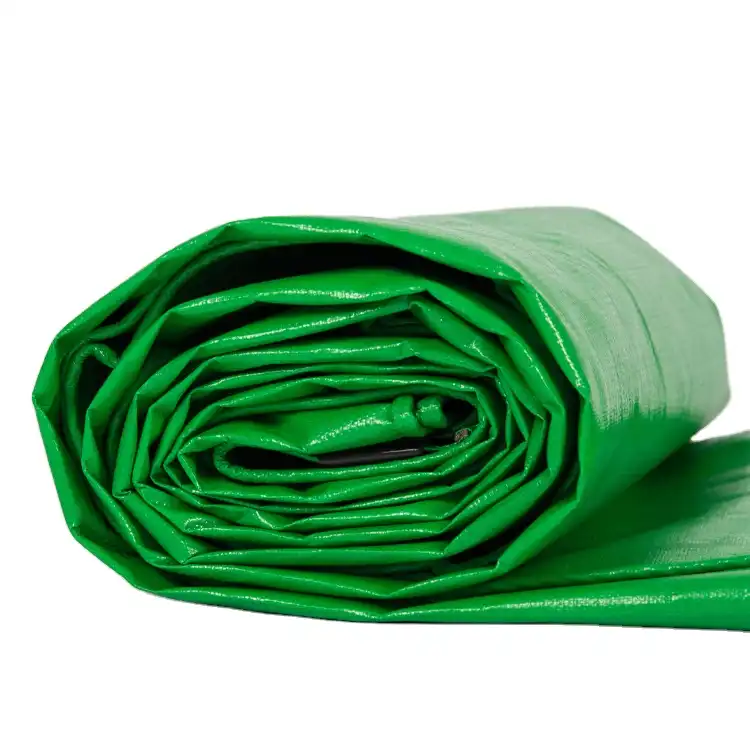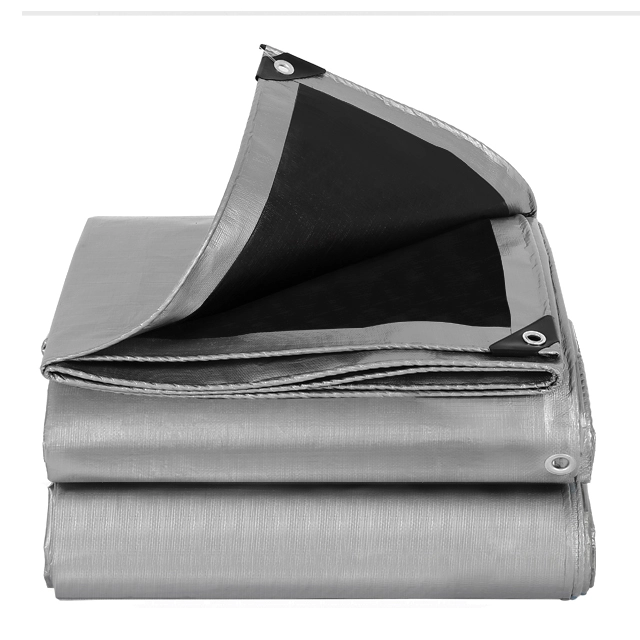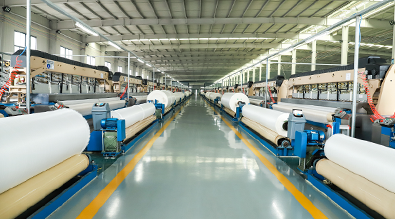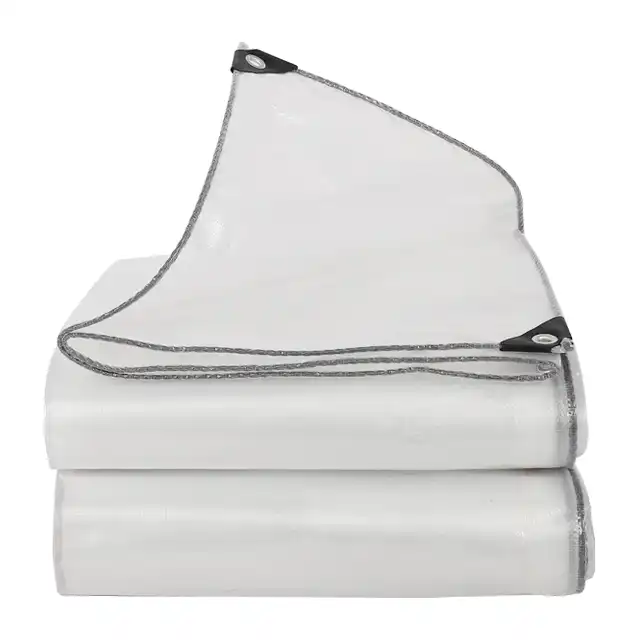Sustainable Packaging with PE Tarpaulin Materials
As global industries increasingly prioritize environmental responsibility and sustainable practices, the packaging sector faces unprecedented pressure to develop eco-friendly solutions that maintain durability and cost-effectiveness. Among the most promising innovations in this field is the strategic application of PE tarpaulin materials for sustainable packaging applications. These versatile polyethylene-based materials offer exceptional strength, weather resistance, and reusability characteristics that make them ideal for reducing packaging waste while maintaining superior protection for goods across various industries. PE tarpaulin represents a significant advancement in sustainable packaging technology, combining environmental consciousness with practical functionality to meet the evolving demands of modern commerce.
Environmental Benefits and Sustainability Features of PE Tarpaulin Packaging

The environmental advantages of PE tarpaulin in packaging applications extend far beyond traditional single-use materials, offering compelling solutions for companies seeking to reduce their ecological footprint while maintaining operational efficiency. Unlike conventional packaging materials that are designed for one-time use, PE tarpaulin demonstrates exceptional durability and longevity, allowing for multiple reuse cycles that significantly reduce overall material consumption. This extended lifecycle capability stems from the high-quality polyethylene construction that resists tearing, puncturing, and degradation under normal usage conditions. The UV treatment applied to quality PE tarpaulin products ensures that materials maintain their structural integrity even when exposed to prolonged sunlight, making them particularly valuable for outdoor storage and transportation applications where traditional packaging would quickly deteriorate. The recyclability of PE tarpaulin materials represents another crucial environmental benefit that supports circular economy principles in packaging operations. When PE tarpaulin products eventually reach the end of their useful life, the polyethylene material can be processed through established recycling channels, transforming waste into new products rather than contributing to landfill accumulation. This recyclability factor becomes particularly significant when considering the substantial volumes of packaging materials used in global commerce, where even modest improvements in material recovery rates can yield substantial environmental benefits. Furthermore, the manufacturing efficiency of PE tarpaulin products contributes to their sustainability profile through optimized resource utilization and reduced energy consumption during production processes. Modern PE tarpaulin manufacturing facilities employ advanced extrusion and weaving technologies that minimize material waste while maximizing output quality, resulting in more efficient use of raw materials and energy resources compared to traditional packaging manufacturing methods.
Industrial Applications and Versatility in Sustainable Packaging Solutions
The versatility of PE tarpaulin materials in industrial packaging applications demonstrates their potential to replace multiple single-use packaging solutions with a single, reusable alternative that provides superior protection and environmental benefits. In the transportation sector, PE tarpaulin serves as an excellent truck canopy and cargo cover material, protecting goods during shipping while eliminating the need for disposable plastic sheeting or cardboard coverings that would typically be discarded after a single use. The material's 100% waterproof properties ensure that sensitive cargo remains protected from moisture damage, while its tear-resistant construction withstands the mechanical stresses associated with loading, unloading, and transportation activities. Port and warehouse operations benefit significantly from PE tarpaulin applications in cargo storage and protection systems, where the material's durability allows for long-term use in challenging outdoor environments. The anti-corrosion and shrink-proof characteristics of quality PE tarpaulin products ensure consistent performance even in marine environments where salt air and moisture would quickly degrade alternative materials. This reliability translates to reduced replacement costs and decreased packaging waste generation in high-volume shipping operations. Agricultural applications showcase another dimension of PE tarpaulin's versatility in sustainable packaging, particularly in greenhouse operations and crop protection systems. The material's UV treatment and weather resistance make it ideal for creating reusable agricultural covers that protect crops while reducing the need for disposable plastic films. These applications demonstrate how PE tarpaulin can support sustainable agricultural practices while providing the protective functionality required for successful crop production. The construction industry has increasingly adopted PE tarpaulin materials for temporary enclosures and building protection applications, where the material's durability and weather resistance provide reliable protection throughout extended construction timelines. Unlike traditional construction plastic sheeting that requires frequent replacement, PE tarpaulin installations can withstand the rigors of construction environments while maintaining their protective effectiveness, resulting in both cost savings and reduced waste generation.
Quality Manufacturing and Innovation in PE Tarpaulin Production
The manufacturing excellence demonstrated by leading PE tarpaulin producers directly impacts the sustainability and effectiveness of these materials in packaging applications, with advanced production technologies enabling the creation of high-performance products that maximize environmental benefits while meeting demanding industrial requirements. Modern PE tarpaulin manufacturing facilities employ sophisticated quality management systems that ensure consistent product performance while minimizing material waste and energy consumption throughout the production process. These facilities typically feature multiple wire drawing lines, advanced water-jet looms, and precision coating machines that work together to create PE tarpaulin products with optimized thickness, strength, and durability characteristics. The research and development capabilities of established PE tarpaulin manufacturers have yielded significant innovations in material performance and environmental impact, including the development of fire-resistant formulations that expand the safety applications of these materials while maintaining their core sustainability benefits. Advanced coating technologies enable the production of PE tarpaulin materials with enhanced waterproof properties and improved UV resistance, extending product lifespans and reducing replacement frequency in demanding applications. Quality certification processes, including ISO 9001:2015 compliance, ensure that PE tarpaulin products meet international standards for performance and environmental responsibility. These certifications provide assurance to customers that their sustainable packaging choices are supported by rigorous quality control measures and continuous improvement processes that optimize both product performance and environmental impact. The customization capabilities offered by leading manufacturers enable the development of PE tarpaulin solutions tailored to specific packaging applications, optimizing material usage and performance characteristics to meet exact customer requirements. This customization approach reduces material waste by eliminating over-engineering while ensuring that products deliver the precise performance characteristics needed for their intended applications.
Conclusion
Sustainable packaging with PE tarpaulin materials represents a transformative approach to industrial packaging that successfully balances environmental responsibility with operational effectiveness. The durability, reusability, and recyclability of PE tarpaulin products offer compelling alternatives to single-use packaging materials while providing superior protection and cost-effectiveness across diverse applications. As industries continue to prioritize sustainability initiatives, PE tarpaulin materials demonstrate the potential for packaging solutions that support both environmental goals and business objectives through innovative material science and manufacturing excellence.
For businesses seeking reliable sustainable packaging solutions, partnering with established China PE tarpaulin factory operations ensures access to high-quality materials backed by proven manufacturing expertise and comprehensive quality assurance programs. Leading China PE tarpaulin supplier companies combine advanced production capabilities with extensive customization options to deliver packaging solutions that meet specific industry requirements while supporting sustainability goals. Working with experienced China PE tarpaulin manufacturer partners provides access to innovative material technologies and specialized expertise that optimize packaging performance while minimizing environmental impact. Companies seeking cost-effective sustainable packaging solutions can benefit from establishing relationships with reputable China PE tarpaulin wholesale suppliers who offer competitive pricing and reliable supply chain support for large-volume applications. For detailed information about sustainable PE tarpaulin packaging solutions and custom manufacturing capabilities, contact our team at info@shengdetarp.com to explore how these innovative materials can support your sustainability objectives while delivering superior packaging performance.
References
1. Thompson, R.C., Moore, C.J., Saal, F.S., & Swan, S.H. (2009). Plastics, the environment and human health: current consensus and future trends. Environmental Research Reviews, 364(1526), 2153-2166.
2. Zhang, W., Chen, L., & Liu, M. (2018). Polyethylene tarpaulin applications in sustainable packaging systems: Performance evaluation and environmental impact assessment. Journal of Cleaner Production, 187, 432-441.
3. Anderson, K.P., Williams, D.R., & Martinez, S.A. (2020). Circular economy principles in industrial packaging: A comprehensive analysis of reusable polymer materials. Sustainable Materials and Technologies, 25, e00198.
4. Li, H., Wang, J., & Brown, P.M. (2019). Life cycle assessment of PE tarpaulin materials in commercial packaging applications: Environmental benefits and optimization strategies. Resources, Conservation and Recycling, 142, 156-167.




